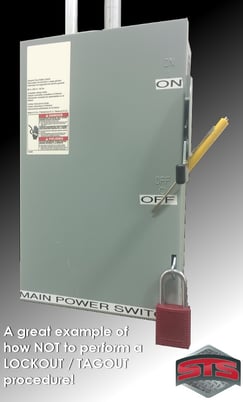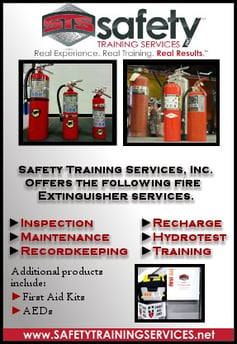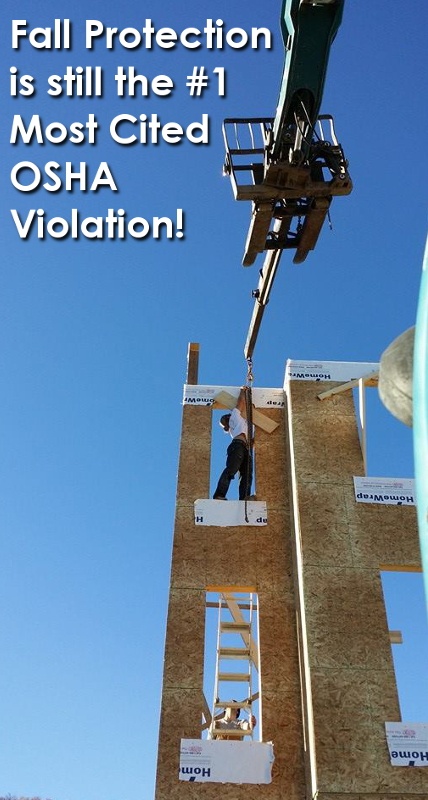Safety training is an important part of any business. Not just for those going into confined spaces or other hazardous atmospheres, but for those going into a formal office, a hospital, or anything in between. Safety training is a phrase often used to describe the training materials designed to teach occupational safety and health standards developed by various safety governing entities such as OSHA (Occupational Safety and Health Administration), ANSI (American National Standards Institute), EPA (Environmental Protection Agency), or DOL (Department of Labor). Employers in the United States have a legal responsibility to educate employees on all workplace safety standards and the hazards their employees may face while working on the job. Proper safety training, whether through the employer or a third-party contractor, meets this requirement.
What are the benefits of safety training? Well, appropriate safety training can be linked to a reduction in the following:
- the number of injuries and deaths
- property damage
- legal liability
- illnesses
- workers' compensation claims
- missed work
For safety training to be successful, participants must be able to demonstrate knowledge of the standard and how it applies to their specific job. If presented correctly by a qualified trainer, it can promote a strong culture of safety in the workplace, one where veteran employees follow proper safety rules & guidelines and assist in promoting the same for new hires. This is achieved by both good, safety-conscious employees and solid trainers who keep employees engaged and keep their training program relevant and not too generalized.
But what happens when you neglect safety training at your workplace? In addition to a potential increase of the things listed above, here are a few times employers have felt the sting in their financial bottom line as well. Below, I have itemized OSHA citations reported in Jun-Aug 2015 for infractions of neglecting safety training for their employees. It's much cheaper to hire someone to do your training if you are unable to handle it yourself than to wait until OSHA hits you with related fines.
Company: Bigston Corporation
Inspection Site: Elk Grove Village, IL
Date of Findings: March 5, 2015
Type of Violation: Serious
29 CFR 1910. 134(k)(1): The employer did not provide respirator training that would ensure each employee could demonstrate knowledge of items in section (i)-(vii).
Penalty: $4,200.00
Source
Company: Grimco Inc.
Inspection Site: Akron, OH
Date of Findings: June 3, 2015

Type of Violation: Serious
29 CFR 1910.147(c)(7)(i): The employer did not provide training to ensure that the purpose and function of the energy control program are understood by employees and that the knowledge and skills required for the safe application, usage, and removal of the energy controls are acquired by employees.
Penalty: $7,000.00
Source
Company: Wilbert, Inc.
Inspection Site: Bellevue, OH
Date of Findings: February 2, 2015
Type of Violation: Serious
29 CFR 1910.174(c)(7)(i): The employer did not provide adequate training to ensure that the purpose and function of the energy control program was understood by employees.
Penalty: $7,000.00
Source
Company: D.R. Diedrich & Co.
Inspection Site: Milwaukee, WI
Date of Findings: February 2015
Type of Violation: Serious
29 CFR 1910.174(c)(7)(i)(A): Authorized employee(s) did not receive training in the recognition of applicable hazardous energy sources, the type and magnitude of the energy available in the workplace, and the methods and means necessary for energy isolation.
Penalty: $6,300.00
Source
Company: Ansley Metal Fabrication and Repair
Inspection Site: Donalsonville, GA
Date of Findings: March 26, 2015
Type of Violation: Serious
29 CFR 1926.761(b): The employer did not train each employee exposed to a fall hazard in accordance with the requirements of 29 CFR 1926.761.
Penalty: $4,900.00
Source
Company: New Homes Construction, Inc.
Inspection Site: Medford, NJ
Date of Findings: February 12, 2015
Type of Violation: Serious
29 CFR 1926.503(a)(2): The employer did not assure that each employee exposed to fall hazards was trained by a competent person qualified in the areas specified in 29 CFR 1926.503(a)(2)(i) through (viii).
Penalty: $3,080.00
Type of Violation: Serious
29 CFR 1926.1060(a): The employer did not provide a training program for each employee using ladders and stairways, as necessary, which would train each employee in the procedures to be followed to minimize hazards related to ladders and stairways.
Penalty: $3,080.00
Source
Company: Elite Storage Solutions, LLC
Inspection Site: Monroe, GA
Date of Findings: January 28, 2015
Type of Violation: Serious
29 CFR 1910.147(c)(7)(i): The employer did not provide training to ensure that the purpose and function of the energy control program are understood by employees and that the knowledge and skills required for the safe application, usage, and removal of the energy controls are acquired by employees.
Penalty: $7,000.00
Type of Violation: Serious
29 CFR 1910.157(g)(l): An educational program was not provided for all employees to familiarize them with the general principles of fire extinguisher use and the hazards involved with incipient stage fire fighting. The employer expected employees to use extinguishers to use extinguishers to fight incipient level fires, but did not implement a training program for the use of fire extinguishers.
Penalty: $5,500.00
Source
As you can see, the above fine amounts aren't generally high enough amounts to warrant closing up your company's doors, but they will certainly impact your profitability. Even more important is the realization that after paying the fine, you still have to pay for the training as well. Which can effectively double the initial cost if you were to train your employees in the first place. That number wouldn't even have taken into consideration the potential increase of compensation claims, property damage, missed work, injuries, legal liabilities and everything else discussed earlier. Keep in mind too that OSHA has made it easy to anonymously tip them off to an unsafe workplace. One phone call or email can now much more easily give an inspector a reason to visit. You must always take employee complaints seriously. In the case of the last two sources, you can see that having two fines for training can add up. If you expect your employees to use the provided fire extinguishers, you must train them in proper usage and be sure to have someone designated to check them monthly. Last of note is the company that did not have a qualified person train their employees; be sure if you are training your employees yourself, or in-house, that you (or whomever is doing the safety training) is qualified to do so. You may decide it be best to hire an outside person or company to do your safety training, but again, be sure they are at a qualified level to conduct the training. If you have any questions about this subject, feel free to contact us here at Safety Training Services by clicking below!





